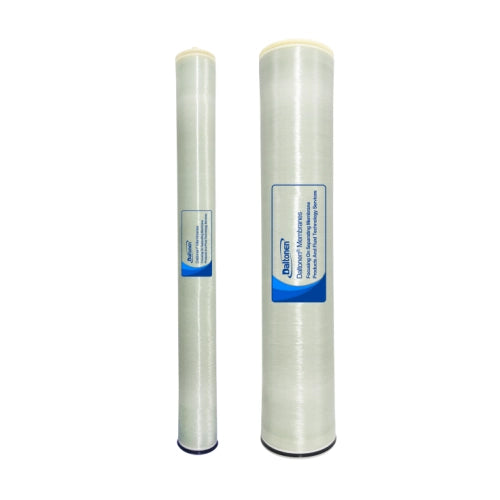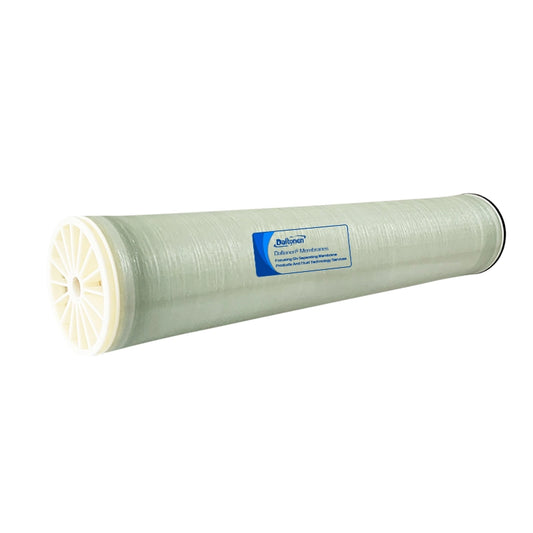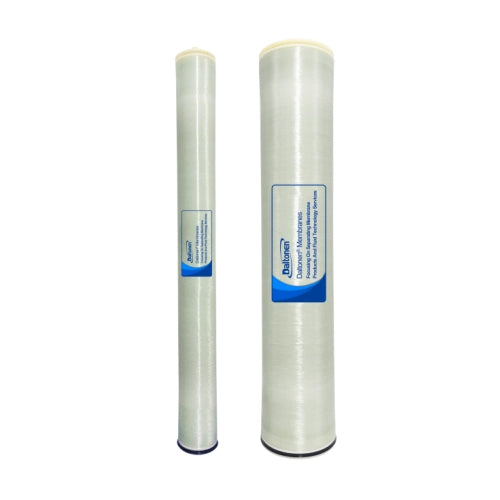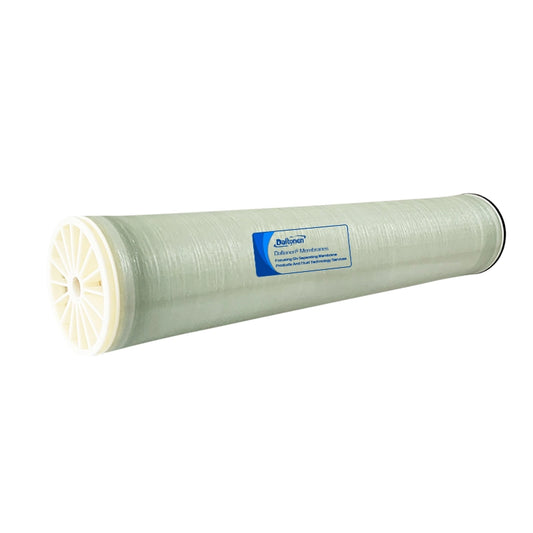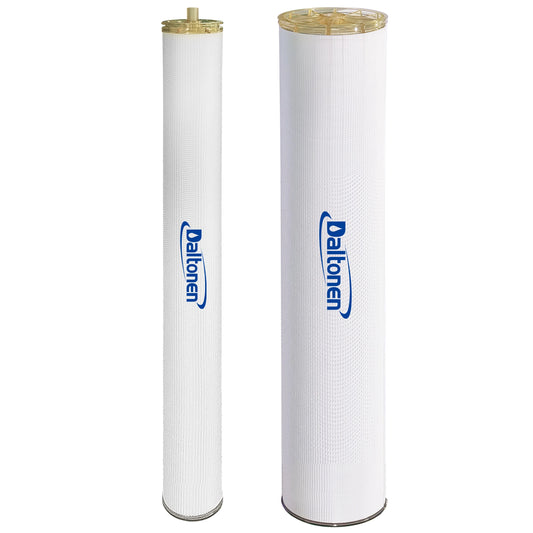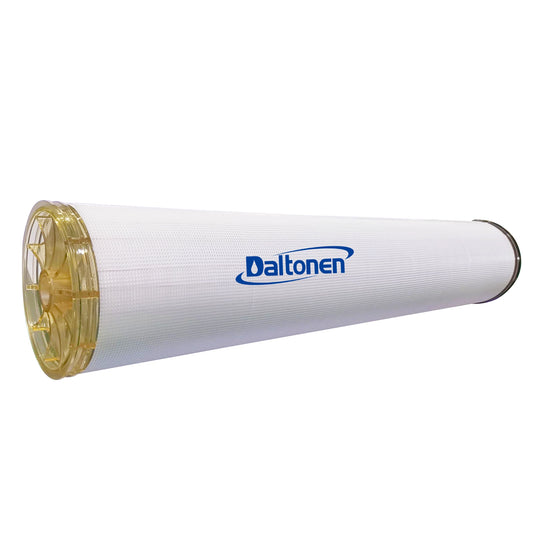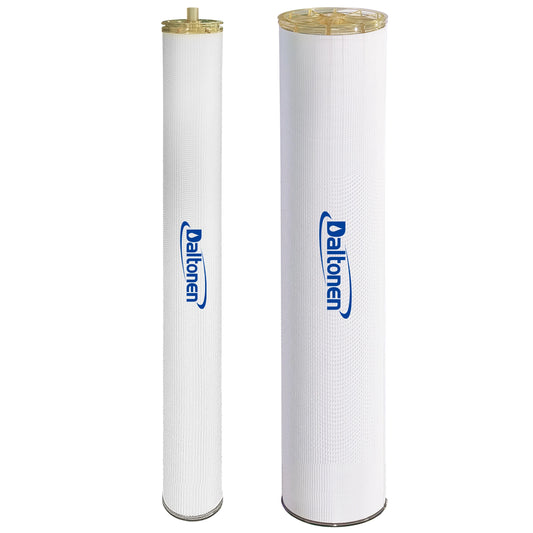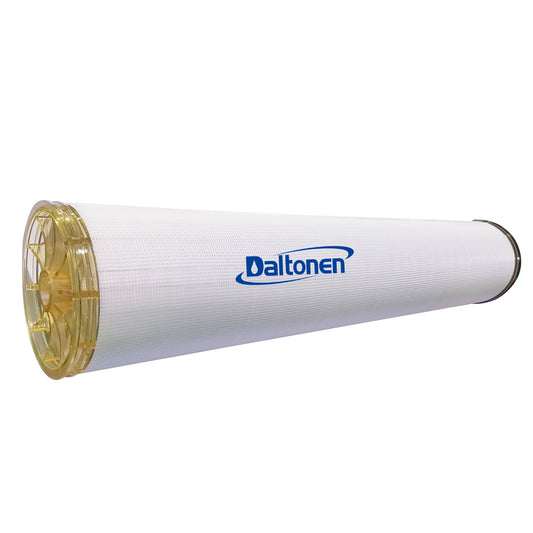Cleaning RO Membrane Slow Flush Complete Steps
Cleaning RO Membrane Slow Flush Complete Steps
- Pre-flush Preparation
1.1 System Shutdown and Drainage
Before performing the slow flush of the RO membrane, it is necessary to shut down the system. This step is to ensure that there is no water flow during the cleaning process, which could affect the cleaning results. After shutting down, the stored water in the system must be completely drained, usually by opening the drainage valve. During the drainage process, all water in the pressure vessels and pipes should be drained to facilitate the injection and circulation of the cleaning solution. Depending on the size and complexity of the system, the drainage time may range from a few minutes to several hours. In some cases, pumps may be required to assist in draining to ensure the system is thoroughly emptied.
1.2 Cleaning Chemical Preparation
When cleaning the RO membrane, it is necessary to choose the appropriate cleaning chemicals. These chemicals should be selected based on the type of contamination the membrane elements are subjected to, and common cleaning chemicals include citric acid, sodium hydroxide, ethylene diamine tetra acetic acid (EDTA), etc. The preparation of the cleaning solution must be carried out strictly according to the recommended formula and ratio to ensure cleaning effectiveness. Typically, the preparation of the cleaning solution takes place in a dedicated cleaning tank, using deionized water or RO product water to dissolve the cleaning chemicals, ensuring they are fully dissolved and well mixed. The prepared cleaning solution should be tested for pH to ensure it is within the recommended range. For example, the pH of acidic cleaning solutions is usually controlled between 2-3, while the pH of alkaline cleaning solutions is controlled between 10-12.

1.3 Personal Protective Equipment
When handling cleaning chemicals, personal safety is crucial. Therefore, in the pre-flush preparation, it is essential to ensure that operators wear appropriate personal protective equipment (PPE). This includes but is not limited to chemical-resistant gloves, protective goggles, protective clothing or aprons, and respiratory protection equipment when necessary. Operators should receive proper training to understand the safe use and handling procedures of chemicals. In addition, the cleaning area should maintain good ventilation to reduce the accumulation of chemical vapors in the air. During the cleaning process, direct contact with chemicals should be avoided, especially for those with corrosive or toxic properties, which should be handled with extra care.
- Cleaning Solution Preparation
2.1 Select Cleaning Solution Based on Contamination Type
When selecting a cleaning solution, it is essential to first identify the type of contamination of the RO membrane elements, as this will directly affect the choice and preparation of the cleaning solution. Common types of contamination include inorganic scale, microbial contamination, and organic contamination. Choose the appropriate cleaning solution for different types of contaminants.
- Inorganic scale: Acidic cleaning solutions are usually used, such as 1%-2% citric acid solution or 0.4% HCl solution, which can effectively remove inorganic scale such as calcium carbonate and calcium sulfate.
- Microbial contamination: Cleaning solutions containing oxidizing biocides are recommended, such as 0.2% NaClO + 0.1% NaOH solution, which can not only remove biological contamination but also disinfect the system.
- Organic contamination: For severe organic contamination, alkaline cleaning solutions can be used, such as a mixture of 0.1% NaOH and 0.03% SDS, with a pH controlled around 11.5, to remove natural organic pollutants and microbial contamination.
2.2 Mixing and Adjusting Cleaning Solution
Mixing and adjusting the cleaning solution is a key step to ensure cleaning effectiveness. Here is a detailed mixing and adjustment process:
- Mixing cleaning solution: In a dedicated cleaning tank, use deionized water or RO product water to dissolve cleaning chemicals according to the recommended formula ratio. For example, for citric acid solution, add 1-2% citric acid to every 100 gallons (about 379 liters) of water. Stirrers or circulation pumps should be used during mixing to ensure the chemicals are fully dissolved.
- Adjusting pH: The prepared cleaning solution should be tested for pH and adjusted as needed. Acidic cleaning solutions are usually controlled between pH 2-3, while alkaline cleaning solutions are controlled between pH 10-12. pH adjustment can be achieved by adding appropriate amounts of acid or base, such as using sulfuric acid or hydrochloric acid to lower the pH, or ammonia water to raise the pH.
- Pre-flush circulation: Before formal cleaning, the prepared cleaning solution should be circulated through the RO system to pre-flush loose contaminants. This step helps reduce the amount of cleaning solution used and improves cleaning efficiency.
- Monitoring and adjusting: During the cleaning process, the pH, temperature, and concentration of the cleaning solution should be regularly monitored and adjusted as necessary. Especially for acidic cleaning solutions, if the pH rises more than 0.5 units, acid should be supplemented to maintain cleaning effectiveness.
- Cleaning solution replacement: If the cleaning solution changes color or becomes turbid during circulation, it indicates that the cleaning solution is saturated and needs to be replaced with a new one to ensure cleaning effectiveness.
Through the above steps, the correct preparation and adjustment of the cleaning solution can be ensured, providing the best conditions for the slow flush of the RO membrane.
- Slow Flush Operation
3.1 Low-pressure Flush Pre-treatment
Before the slow flush operation, the pre-treatment step is crucial. The purpose of this step is to use low-pressure flushing to remove loose contaminants on the surface of the RO membrane and in the pipes, creating conditions for subsequent cleaning solution circulation.
- Flushing pressure and flow rate: Low-pressure flushing is usually performed with RO product water, with a pressure controlled at 20-40 psi and a flow rate of 1/3 of the normal cleaning flow rate. The purpose of this step is to avoid additional pressure on the membrane elements while ensuring that the cleaning solution can effectively replace the raw water.
- Flushing time: Low-pressure flushing usually lasts for 5-10 minutes to ensure that the raw water in the system is completely replaced. During the flushing process, the turbidity and pH value changes of the return liquid should be closely observed to assess the flushing effect.
- Drainage treatment: After the flushing is completed, the initial return water must be drained, as this part of the liquid may contain a high concentration of contaminants, and direct discharge may affect the effectiveness of the cleaning solution.
3.2 Low-flow Input Cleaning Solution
After the pre-treatment step is completed, the next step is to input the prepared cleaning solution into the RO system at a low flow rate.
- Flow control: The flow rate of the low-flow input cleaning solution should be controlled at about 1/3 of the normal cleaning flow rate, which can ensure that the cleaning solution has enough contact time with the membrane elements, thereby improving the cleaning effect.
- Temperature management: The temperature of the cleaning solution should be maintained above 25°C to ensure the activity and effectiveness of the cleaning solution. In actual operation, heating equipment may be required to maintain the temperature of the cleaning solution.
- Circulation time: Low-flow circulation usually lasts for 30-60 minutes, during which the cleaning solution will gradually penetrate into all parts of the membrane elements, loosening and removing contaminants.

3.3 Circulation Replacement of Raw Water
After the low-flow input of cleaning solution, it is necessary to perform the operation of circulating replacement of raw water to ensure that the cleaning solution can fully contact and clean the membrane elements.
- Circulation flow: In this step, the flow rate of the cleaning solution should be increased to 1.5 times the normal cleaning flow rate to achieve more effective circulation and contaminant removal.
- Circulation time: High-flow circulation usually lasts for 30-60 minutes, during which the cleaning solution will continuously remove contaminants from the system.
- Pressure monitoring: During the circulation process, the system pressure should be closely monitored to ensure that the pressure is not too high, which could damage the membrane elements.
- Cleaning effect evaluation: After the circulation is completed, the color and turbidity changes of the cleaning solution can be observed to evaluate the cleaning effect. If the color of the cleaning solution becomes darker or the turbidity increases, it indicates that the contaminants have been effectively removed.
Through the above slow flush operation steps, the RO membrane can be effectively cleaned, extending its service life, and maintaining the efficient operation of the system.
- Circulation and Soaking
4.1 Cleaning Solution Circulation
Cleaning solution circulation is a key step in the slow flush process, and its purpose is to loosen and remove contaminants on the surface of the RO membrane through continuous circulation of the cleaning solution.
- Circulation flow control: During the circulation process, the flow rate of the cleaning solution should be controlled at about 1.5 times the normal cleaning flow rate to ensure that the cleaning solution can effectively penetrate the membrane elements and achieve cleaning effects. According to the size and system design of the membrane elements, the flow rate per pressure vessel should be controlled within a certain range, for example, the flow rate for 2.5-inch membrane elements is 5gpm (1.2m³/h), for 4-inch membrane elements is 10gpm (2.3m³/h), and for 8-inch membrane elements is 40gpm (9.1m³/h).
- Circulation time: The circulation time of the cleaning solution is usually
30-60 minutes, but the specific time should be determined based on the degree of contamination of the membrane elements and the effectiveness of the cleaning solution. During the circulation process, the pH, temperature, and turbidity of the cleaning solution should be regularly checked to assess the cleaning effect.
- Temperature management: The temperature of the cleaning solution has a significant impact on the cleaning effect. Ideally, the temperature of the cleaning solution should be controlled between 25-40°C to maintain the activity of the chemical components in the cleaning solution. If the temperature is too low, the efficiency of the cleaning solution may be reduced; if the temperature is too high, it may damage the membrane elements.
- Pressure monitoring: During the circulation process, the system pressure should be maintained between 20-40 psi to avoid excessive pressure on the membrane elements. Excessive pressure may cause damage to the membrane elements, while insufficient pressure may affect the circulation efficiency of the cleaning solution.
4.2 Stop Circulation and Soak
After circulating the cleaning solution for a certain period, it is necessary to stop the circulation pump and let the membrane elements be completely soaked in the cleaning solution to further soften and remove stubborn dirt.
- Soaking time: The duration of soaking depends on the degree of contamination of the membrane elements and the chemical components of the cleaning solution. Generally, the membrane elements can be soaked for about 1 hour, but for stubborn dirt, the soaking time may need to be extended to 10-15 hours or even overnight.
- Temperature maintenance: During the soaking process, the temperature of the cleaning solution should be maintained between 25-30°C. If the temperature drops, the circulation pump can be used to circulate the cleaning solution at a very low flow rate to maintain a constant temperature.
- Intermittent circulation: During the soaking period, the circulation pump can be intermittently started to maintain the fluidity and temperature of the cleaning solution. This helps to improve the cleaning effect, especially when dealing with stubborn dirt.
- Effect evaluation: After the soaking is completed, the color and turbidity changes of the cleaning solution should be checked to evaluate the cleaning effect. If the color of the cleaning solution becomes darker or the turbidity increases, it indicates that the contaminants have been effectively removed. At this point, the next step of flushing can be started to completely remove the cleaning solution and loosened contaminants from the system.

- High-flow Circulation
5.1 Increase Flow to Flush Contaminants
High-flow circulation is a crucial step in the slow flush process, and its purpose is to increase the flow rate to enhance the impact force of the cleaning solution, thereby more effectively flushing away contaminants loosened by the cleaning solution.
- Flow adjustment: In this step, the flow rate of the cleaning solution should be adjusted to 1.5 times the normal cleaning flow rate to achieve a deeper cleaning effect. This increased flow helps to increase the momentum of the cleaning solution, making it easier for contaminants to detach from the membrane surface.
- Flushing time: High-flow flushing usually lasts for 30 to 60 minutes, which is considered sufficient for the cleaning solution to penetrate the deep layers of the membrane elements, loosening and removing contaminants. The specific time should be determined based on the actual contamination situation of the system and the effectiveness of the cleaning solution.
- Pressure management: During the high-flow flushing process, the system pressure should be kept within a safe range to avoid exceeding the pressure-bearing limit of the membrane elements. Excessive pressure may cause damage to the membrane elements, while insufficient pressure may reduce the flushing effect.
- Temperature control: To maintain the activity of the chemical components in the cleaning solution, the temperature should be controlled between 25-40°C. The appropriate temperature helps to improve cleaning efficiency, especially when using enzyme-based cleaning agents, where temperature significantly affects enzyme activity.
- Effect monitoring: During the high-flow flushing process, the color, turbidity, and pH of the cleaning solution should be regularly monitored. Changes in these indicators can reflect the cleaning effect, and an increase in turbidity may indicate that contaminants are being effectively removed.
- Basis for flow adjustment: The decision to increase the flow should be based on the assessment of the system's contamination degree and the type of cleaning solution. For systems with severe contamination, higher flow may be required for effective cleaning. At the same time, the adjustment of flow should also consider the system's pressure-bearing capacity and the integrity of the membrane elements.
Through the above high-flow circulation steps, the contaminants on the surface of the RO membrane can be thoroughly removed, thereby restoring the performance of the membrane elements, extending their service life, and ensuring the stable operation of the system.
- Post-cleaning Flush
6.1 Use Pre-treatment Product Water for Flushing
Post-cleaning flush is the final step in the slow flush process of the RO membrane, and its purpose is to completely remove the cleaning solution and loosened contaminants from the system. This step is crucial for ensuring that the system returns to normal operation and water quality.
- Flushing water volume: Depending on the size and design of the system, determine the required pre-treatment product water volume. Usually, the flushing water volume should be sufficient to completely replace the cleaning solution in the system to prevent residual cleaning solution from damaging the membrane elements or affecting water quality.
- Flushing temperature: The temperature of the pre-treatment product water should be controlled at above 20°C to ensure flushing effectiveness. Low-temperature water may cause contaminants to re-deposit on the membrane surface, reducing the cleaning effect.
- Flushing time: The flushing time is usually 20-30 minutes, but the specific time should be determined based on the actual contamination situation of the system and the flushing water volume. During the flushing process, the color and turbidity of the product water should be closely observed until the product water becomes clear and free of foam or cleaning agent residue.
- Flushing flow rate: The flushing flow rate should be consistent with or slightly higher than the normal operating flow rate to ensure sufficient momentum to remove contaminants from the system. Insufficient flow may result in incomplete flushing, while excessive flow may put additional pressure on the membrane elements.
- Discharge requirements: During the flushing process, the product water should be directly discharged until the water quality returns to normal. This means that the conductivity and pH of the product water should return to the levels before cleaning, indicating that the cleaning solution in the system has been completely removed.
- System inspection: After the flushing is completed, a comprehensive inspection of the system should be conducted to confirm that there is no residual cleaning solution in all pipes, valves, and membrane elements. If any residue is found, continue flushing until the system is completely clean.
- Data recording: During the entire flushing process, detailed records of flushing water volume, time, temperature, and product water quality data should be kept. These data are crucial for evaluating the cleaning effect and optimizing future cleaning plans.
By strictly implementing the above flushing steps, the slow flush process of the RO membrane can achieve the expected effect, the system can quickly return to normal operation, and the water quality can meet production requirements.

- Cleaning Effect Inspection
7.1 Inspection of Membrane Element Color and Transparency
Inspection of the cleaning effect is a key step to ensure the success of the slow flush of the RO membrane. Among them, color and transparency inspection is an important means to visually judge the cleaning effect.
- Color inspection: Uncontaminated RO membranes usually have a uniform translucent color, while contaminated membrane elements may have darker colors or color spots. After cleaning, the color of the membrane elements should return to near the original state, with uniform color and no obvious color difference. If the color of the membrane elements remains dark or has color spots after cleaning, it may indicate that the contaminants have not been completely removed and further cleaning is needed.
- Transparency inspection: Transparency is another important indicator to measure the cleaning effect of the membrane elements. Before cleaning, due to the presence of contaminants, the transparency of the membrane elements may be reduced. After cleaning, the transparency of the membrane elements should significantly improve, allowing a clear view of objects on the other side. If the transparency does not significantly improve, it may be necessary to re-evaluate the choice of cleaning solution and the cleaning process.
By inspecting the color and transparency of the membrane elements, the cleaning effect can be visually evaluated in a timely manner, adjusting the cleaning plan to ensure the long-term stable operation of the RO system.
7.2 Detection of Water Production and Salt Removal Rate
Water production and salt removal rate are two key indicators of RO membrane performance, which are directly related to the water quality and efficiency of the system.
- Water production detection: After cleaning, the water production of the system should be detected to see if it has returned to the expected level. A decrease in water production may be due to membrane element contamination, and effective cleaning can restore the permeability of the membrane, increasing water production. Water production detection can be carried out using a flowmeter, recording the volume of water produced per unit time, and comparing it with the data before cleaning.
- Salt removal rate detection: Salt removal rate refers to the ability of the RO membrane to remove dissolved solids in water, usually measured by conductivity. After cleaning, the conductivity of the product water should be detected to assess whether the salt removal rate has achieved the expected effect. Salt removal rate detection can be carried out using a conductivity meter, measuring the conductivity of the incoming water and product water, and calculating the change in salt removal rate.
By detecting water production and salt removal rate, the cleaning effect can be quantitatively evaluated to ensure that the performance of the RO membrane is restored. If the water production and salt removal rate do not reach the expected level, further cleaning may be needed or consider replacing the membrane elements
